The installation of a third turbine generator (Unit 2) at Kajaki Dam Hydropower Plant in Helmand Province was a major accomplishment in U.S. and Afghan government efforts to expand access to electricity in Afghanistan. The turbine was commissioned in October 2016, adding 18.5 megawatts (MW) of power to the country’s southern electrical grid. The successful project reduced reliance on more expensive and dirtier diesel generation and nearly doubled the amount of renewable energy distributed to Kandahar, Afghanistan’s second-largest city and a hub of commerce in the south. The Afghan national electric utility, Da Afghanistan Breshna Sherkat (DABS), assumed full responsibility for operations and maintenance of the facility in March 2017.
- With support from the Government of Germany, a temporary unit for treating non-EVD infections opened in Liberia’s capital city of Monrovia on January 23.
- The Government of Senegal (GoS) reopened land border crossings with Guinea on January 26. The GoS had closed all borders with Guinea on August 21 due to the EVD outbreak and previously reopened air and sea borders with Guinea on November 14.
- As of January 26, the Government of Liberia (GoL) had reported a total of 21 confirmed cases in the last 21 days—eight cases from Grand Cape Mount County and 13 from Montserrado County.
The Energy Policy and Development Program (EPDP) is a four-year, PhP218 million ($5 million) project started in October 2014 to strengthen policymaking for environmentally sound energy sector development.
The Afghanistan Engineering Support Program (AESP) provides architectural and engineering services, and trains staff and technicians working for Afghan Ministries in the energy, transportation, water, sanitation, and communication sectors. The $72 million project began in November 2009 and ends in November 2015. Its main goals are raising the level of engineering skills in the Afghan government and businesses, and increasing the quality of engineering works in the country.
The objective of this project was to design a roadmap for development of the Sheberghan gas fields in northern Afghanistan to address the country’s critical power shortage. Under this project, USAID supported drilling/rehabilitating up to three gas wells, conducted a gas reservoir study to certify existing/producing field reservoir gas quantity, pressures and quality; and assisted the Afghan government to partner with the private sector to design, build and operate a central, expandable gas processing (sweetening) plant and a system to transport raw gas from wells to the processing plant. The project also encouraged the private sector to construct and operate a series of gas-fired power generation plants, starting with an initial plant 200 megawatts (MW). These power plants would be built, owned and operated (BOO) as Independent Power Producers (IPPs). Afghan Gas Enterprise (AGE) would play a major role in supplying gas to the IPPs in collaboration upstream with private-sector gas exploration and production companies, mid-stream with private-sector processing companies and downstream by delivering processed gas (fuel) to the IPP.
USAID’s Electronic Government Resource Center Phase II (EGRC-II) project builds upon the successes of its phase I and enhances the policymaking capabilities of Afghanistan’s Ministry of Communications and Information Technology (MoCIT). Through a state-of-the-art resource center, EGRC-II aims to help the Afghan government to use information and communication technology to improve operations, increase transparency, and promote efficient service delivery.
The United States Agency for International Development Regional Water Management Forum improves regional transboundary water management and promotes sustainable management practices. The Forum encourages dialogue on water issues outside of high-level inter-government channels, particularly among academia and community-level water management structures. The Forum also improves the water management skills and techniques of community technicians, scientists, policymakers, civil society, and local end-users. Information-based management of current and future water resources is a focus.
The Kabul Urban Water Supply (KUWS) project, implemented by the German Development Bank (KfW) at the request of the Afghan government, is building the water infrastructure to pipe drinking water to 50 percent of Kabul city residents. The current water system, operated by the Afghanistan Urban Water Supply and Sewerage Company, supplies less than 20 percent of the population. The KUWS project is improving the water system, reducing health risks, and improving livelihoods for Kabul residents.
The Gardez-Khost National Highway is a 101.2-kilometer road linking eastern Afghanistan with the Ghulam Khan Highway in Pakistan. The United States Agency for International Development (USAID) Gardez-to-Khost National Highway (G-K Highway) project included the creation of an all-weather national highway by building bridges, causeways, and drainage structures and asphalting pavement to international standards. The G-K Highway runs through some of Afghanistan’s most difficult and remote and insecure terrain. As a result, the existing pathways were often impassable during floods or landslides. The completed highway was designed to provide economic and security benefits to the populations of Paktia and Khost provinces.
- Malian authorities and WHO announce the end of the EVD outbreak in Mali following two 21-day cycles without anew confirmed case in the country.
- USAID/OFDA partners commenced operations at the Voinjama town EVD treatment unit (ETU) in Liberia’s Lofa County on January 14.
- The Government of Guinea (GoG) officially reopens public schools countrywide; preparations to reopen schools in Liberia and Sierra Leone remain underway.

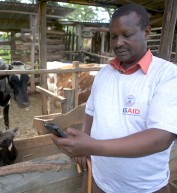
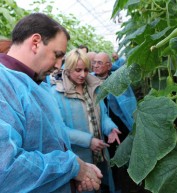
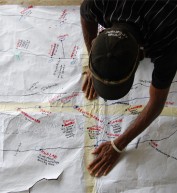
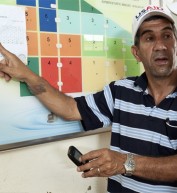

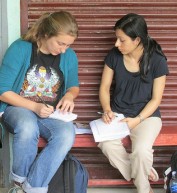
Comment
Make a general inquiry or suggest an improvement.